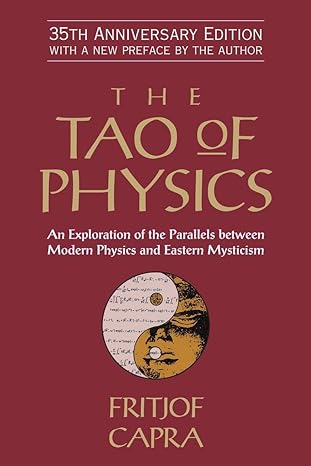Main Topic
Fritjof Capra’s “The Tao of Physics” explores the intriguing parallels between modern physics and Eastern mysticism, delving into the interconnectedness of science and spirituality.
Key Ideas or Arguments
- Holistic Perspective: Capra argues that both physics and mysticism share a holistic perspective, emphasizing the interconnected nature of the universe.
- Uncertainty Principle and Tao: The Uncertainty Principle aligns with the Taoist concept of embracing uncertainty and interconnectedness.
- Quantum Mechanics and Buddhism: Capra draws parallels between quantum mechanics and Buddhist philosophy, highlighting complementary aspects.
- Integration of Eastern and Western Thought: The book proposes an integrated worldview, combining Eastern spiritual insights with Western scientific discoveries.
Chapter Titles or Main Sections
- The New Physics: Introduces the shift in scientific paradigms and the emergence of holistic views.
- The Cosmic Dance: Explores the dynamic interconnectedness in the universe and its relation to mystical dances.
- The Dance of Shiva: Focuses on the parallels between the Hindu god Shiva’s dance and the cosmic dance of subatomic particles.
- The Quanta and the Cosmos: Examines quantum mechanics and its implications for understanding the cosmos.
- Glimpses of a Hidden Order: Discusses the search for a hidden order in the universe, linking scientific and mystical pursuits.
Key Takeaways
Unity of Science and Spirituality: The book concludes that a unified understanding of the universe emerges when combining the insights of modern physics with ancient Eastern mysticism.
Author’s Background and Qualifications
Fritjof Capra, a theoretical physicist, and author holds a Ph.D. in theoretical physics from the University of Vienna, contributing to his credibility in exploring the intersections of science and spirituality.
Comparison to Other Books
“The Tao of Physics” stands out for its comprehensive exploration of the convergence between physics and mysticism, distinguishing itself from more narrowly focused works.
Target Audience
Ideal for readers interested in the intersection of science and spirituality, the book caters to both scientific enthusiasts and those seeking a deeper understanding of Eastern philosophy.
Reception or Critical Response to the Book
“The Tao of Physics” received acclaim for its innovative approach and thought-provoking connections, though some critics questioned the validity of certain comparisons.
Publisher and First Published Date
Published by Shambhala Publications, the book first appeared in 1975, offering a pioneering perspective on the convergence of physics and mysticism.
Recommendations
- “The Dancing Wu Li Masters” by Gary Zukav
- “The Quantum and the Lotus” by Matthieu Ricard and Trinh Xuan Thuan
Singular Sentence Takeaway
“The Tao of Physics” compellingly unifies the realms of modern physics and Eastern mysticism, presenting a harmonious perspective on the interconnected nature of the universe.



